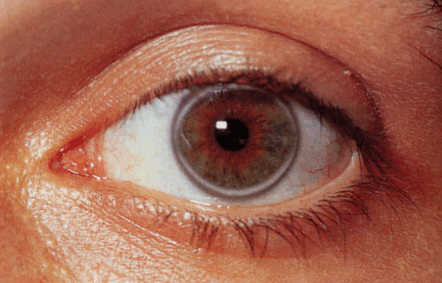The corneal arcus is the most common extravascular cholesterol deposit and more commonplace. This is a deposition of cholesterol forming a circle or an arcus of white or gray circle on the outskirts of the cornea. It does not disturb the visual acuity. It is related to the duration that the severity of dyslipidemia.
The bow has no formal corneal hypercholesterolemia value because it may be present in other dyslipidemia but also in the normolipemic subjects especially after the age of 50 (he took the name of gerontoxon).
It is usually the only repository of essential hypercholesterolemia in 75% of patients with severe hypercholesterolemia (early before age 25 years in 10% of heterozygous and homozygous 50%).
In familial hypercholesterolemia, it is often associated with other deposits: xanthélasma (eyelid xanthoma as papules or yellowish patches located in the inner part and widely spread corresponding to skin infiltration LDL) and tendon xanthomas (deposits in extensor tendons of the fingers and Achilles tendons) in heterozygous and homozygous forms and early cutaneous xanthomas in exceptional homozygous forms.
The bow is a common corneal deposition in mixed dyslipidemia often associated with xanthelasmas and is so fickle meeting in pure hypertriglyceridemia.
Note that xanthelasmas also occur among normolipemic subjects, the mechanism then being a subtle alteration in the composition or structure of lipoproteins or the formation of complexes with immunoglobulins in some systemic diseases.
The discovery of extravascular cholesterol deposits must seek dyslipidemia even if their meeting is possible in the subject normolipémique.


Leave a Reply